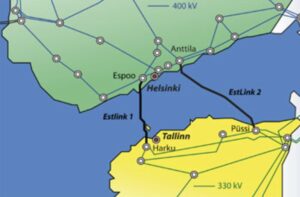Following incident, Balticconnector pipeline capacity getting a boost to strengthen regional gas system
Finnish transmission system operator (TSO) Gasgrid and its Estonian counterpart, Elering, have revealed an increase in the technical capacity of the Balticconnector interconnection point, which will come after the recommissioning of the pipeline, and completion of inspection and maintenance works in the Estonian-Latvian system.

The Balticconnector gas pipeline between Finland and Estonia suffered a rupture and was shut down in early October 2023 when seismic signals were recorded in its vicinity, indicating a possible explosion had occurred around the time a drop in pressure was observed approximately 40 kilometers north of Paldiski, Estonia, close to where the Balticconnector pipeline crosses the Nord Stream 1 pipeline.
Finland’s National Bureau of Investigation (NBI) clarified the cause of the damage, stating that the Newnew Polar Bear vessel, flying the flag of Hong Kong, is believed to have caused it, after an anchor was found a few meters from the gas pipeline damage point. As the repair of the pipeline is expected to take at least five months, all Finnish natural gas demands are expected to be met through imports of LNG.
With this at the forefront, Gasum recently delivered the second LNG cargo since the incident to Finland’s Inkoo FSRU terminal and reserved three more slots at the FSRU for the upcoming winter season. Kaja Kallas, Estonian Prime Minister, believes that the incidents that caused damage to the Balticconnector gas pipeline and telecom cables between Estonia, Finland, and Sweden are related.
Related Article
Taking into consideration the importance of energy security, the Finnish-Baltic region’s transmission system operators have actively undertaken infrastructure projects to ramp up pipeline capacities and enhance the regional gas system to meet the transportation needs of the market. The 152-kilometer-long Balticconnector, which is the first gas pipeline between Finland and Estonia, ended Finland’s isolation from the EU gas market and helped ensure the security of supply in the region.
Previously, Balticconnector’s northbound capacity ranged between 55-60 GWh/day in winter and 65 GWh/day in summer. Gasgrid and Elering explain that a capacity of 78 GWh/day has been offered in the direction from Finland to Estonia, approaching the maximum transportation capacity considering the pipeline’s diameter and design pressure.
The two TSOs highlight that the enhancement of the Latvia-Lithuania interconnection allows for higher gas volumes to be transported across the region. Based on the results of capacity calculations and transmission system operation modeling conducted collaboratively by the TSOs, the technical capacity of the Balticconnector interconnection point can be increased.
Following the restoration of flows over the Balticconnector pipeline and once inspection and maintenance works in the Estonian-Latvian system are executed, Gasgrid and Elering confirm that the base capacity will be increased in the Estonia-Finland direction to 70,5 GWh/day. The increased capacity can be offered for the market starting from October 2024 due to the planned regional maintenance works foreseen in 2024.
In the meantime, Eesti Gaas, known as Elenger, will also bring additional LNG cargo from the U.S. to the Inkoo terminal in the second half of November 2023 to cover Finland’s gas consumption. This FSRU-based terminal holds around 68,000 tons of LNG, which corresponds to around 1,050 GWh of energy, when fully laden.








